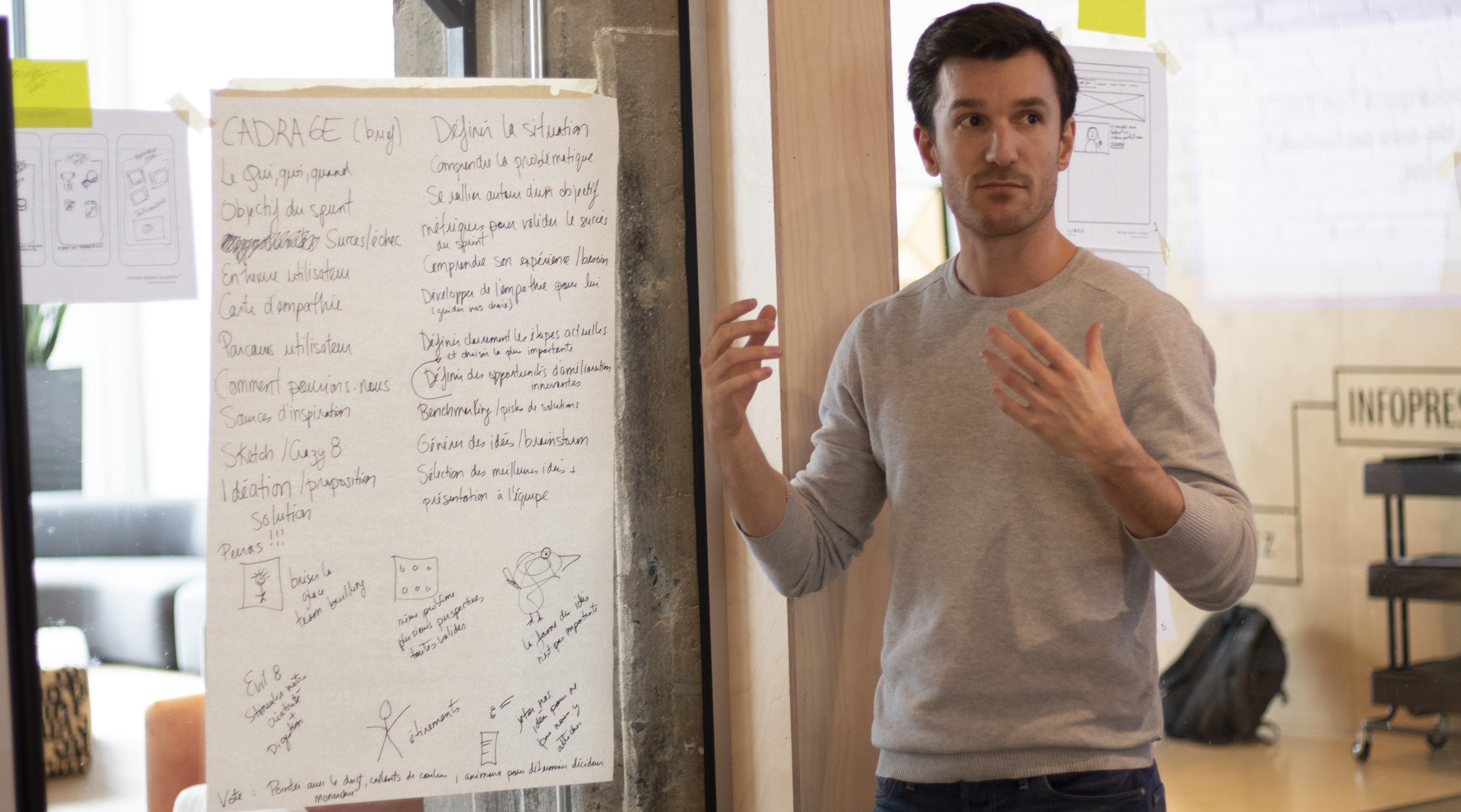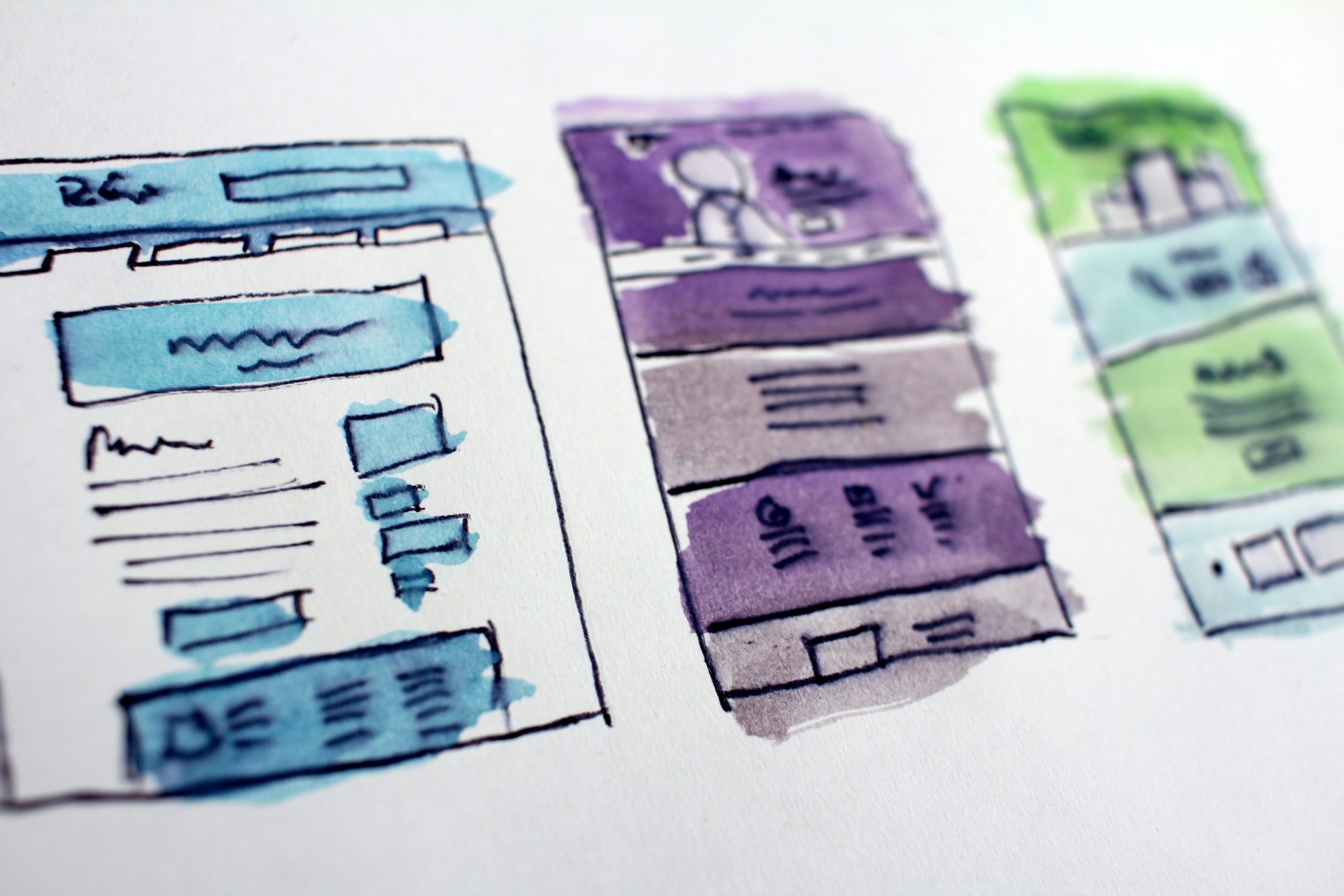The purpose of the Design Sprint methodology is not to turn you into a designer (remember?) but rather to help you adopt a way of thinking based on questioning everything in order to better serve your users. And you don’t have to do it on your own either! People are often intimidated by creativity because they don’t know where to start. However, during a Design Sprint, the facilitator is responsible for framing the process and making your work easier.
But what exactly does that involve? Let’s take a look at the facilitator’s goals and skills.
What is facilitation?
Carrying out a Design Sprint takes planning. The role of the Design Sprint facilitator is primarily to prepare the workshops and set everything up before the sprint week. The facilitator acts as a guide or an empathetic advisor who frames the search for solutions to critical business issues. The facilitator does everything to make sure that the sprint results in concrete, innovative solutions to the problems faced by the experts taking part in the workshops.
The facilitator’s goals
The facilitator has a specific goal to achieve during each workshop. Here are a few examples:
- Align the team towards a common understanding of the problem/challenge and agree on the process/strategy to reach a solution
- Guide team members in their thinking by having them come up with sketches of their imagined solutions
- Guide the team to come up with a solid storyboard
- Build a prototype that looks real enough to the testers that it triggers reactions and good feedback
- Gather external participants to test the prototype(s)
In short, the facilitator must structure the workshops around S.M.A.R.T. goals in order to provide a framework for the discussions and allow new ideas to emerge.
Incredible facilitators have these 5 skills
Great facilitators have many great qualities. We have selected 5 skills that we believe are essential and that could come in handy when conducting meetings, workshops or presentations.
1. They are always well-prepared and ready for anything
Good facilitators should always ask the following questions:
- What are the goals of today’s workshop?
- What do we want to achieve as a group for this workshop to be a success?
- Does any work need to be done by the group prior to the workshop?
- How much time has been allocated for the workshop?
- Is the timeframe realistic for the goals to be achieved?
- What is known about the group?
- What personalities and dynamics are at play?
- What will the workshop space look like?
- How can everyone best prepare themselves?
2. They create an inclusive environment
As facilitators lead workshops, they should find ways to make sure that the entire group is on equal ground. A respectful environment encourages group members to participate in the Design Sprint process and thereby take ownership of it. To create such an environment, the facilitator must come up with activities that appeal to different personality types and provide a space that encourages discussion and collaboration. That could be as simple as having the participants sit in a circle!
3. They set clear guidelines
The facilitator sets the tone for the workshop with regard to acceptable behaviour and attitudes. Facilitators can come up with guidelines that seem useful or even ask the group what behaviour and attitudes would help them to get the most out of the sprint. It’s also important that the guidelines be concrete, as clear instructions make it easier for the group to achieve the desired result. The workshops go best if the steps of the activity are clearly broken down and the final goal is explained in detail.
4. They have mastered the art of active listening
The facilitator has to make sure that everyone has had the chance to be heard. Mirroring, paraphrasing and feedback are three tools you can use to make sure you are actively listening to the whole group.
“One of the things I learned while facilitating is that active listening is the best superpower a facilitator can have. It makes it possible to identify the important information brought up by the group, to sense whether a participant is confused based on their behaviour, to ask the right questions to build on a colleague’s developing idea and much more! When in doubt, practice active listening!” — Amélie Bissonnette-Montminy, Web Designer and Facilitator
5. They are flexible and able to adapt
The facilitator is responsible for taking care of the group to make sure it functions at its best. Facilitators should always have more than one trick up their sleeves to be able to help the teams reach their final goal. Sometimes, a workshop may not go well or the plans that the facilitator originally laid out don’t work as expected. That’s why facilitators have to have alternative activities they can try if their original plan doesn’t work.
Has this topic sparked your curiosity? If so, here’s some more content to expand your knowledge!




